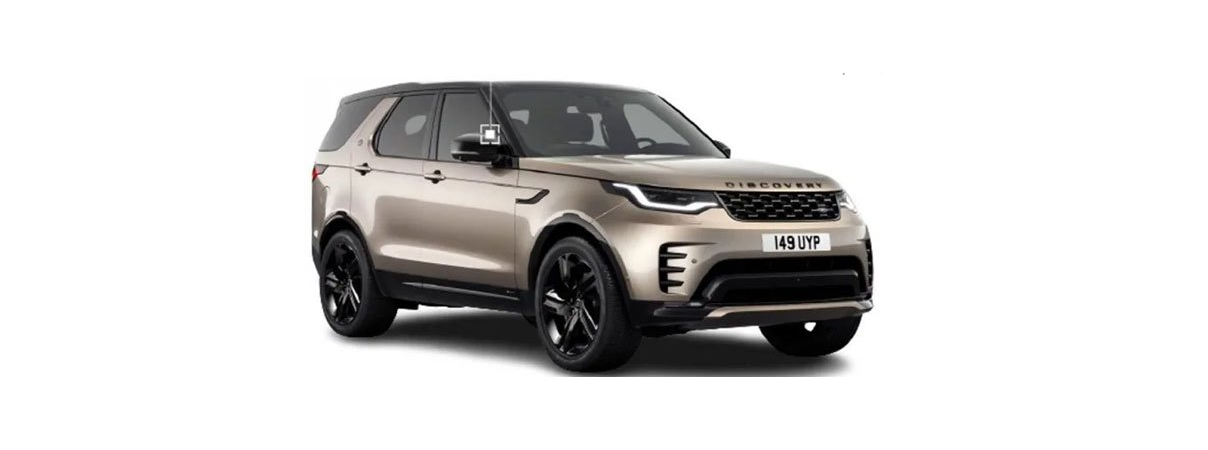2023 Land Rover Discovery Sport Head Restraints
HEAD RESTRAINTS SAFETY
Make sure to read and fully understand the relevant warnings before using the features in this section. Failure to observe warnings and cautions may result in vehicle damage, injury, or DEATH in the event of an accident.
- Head restraints are designed to support the head, not the back of the neck. The head restraint must be positioned correctly to restrain rearward movement of the head in a collision. An incorrectly adjusted head restraint increases the risk of death or serious injury in the event of a collision.
- While stationary, adjust the head restraint so that the top of the head restraint is above the centerline of the head. An incorrectly adjusted head restraint increases the risk of death or serious injury in the event of a collision.
- Do not drive or carry passengers with the head restraints removed from occupied seats. The absence of a correctly adjusted head restraint increases the risk of neck injury in the event of a collision.
- Never adjust the head restraints while the vehicle is in motion. Doing so could potentially cause a loss of vehicle control and personal injury.
- Always store a removed head restraint securely. In the event of an accident, an unsecured object could potentially cause serious injury or death.
- Head restraints are fitted to all front and rear seats.
HEAD RESTRAINTS OVERVIEW
- Head restraints are designed to support the head, not the back of the neck. The head restraint must be positioned correctly to restrain rearward movement of the head in a collision. An incorrectly adjusted head restraint increases the risk of death or serious injury in the event of a collision.
- While stationary, adjust the head restraint so that the top of the head restraint is above the centerline of the head. An incorrectly adjusted head restraint increases the risk of death or serious injury in the vent of a collision.
- Do not drive or carry passengers with the head restraints removed from occupied seats. The absence of a correctly adjusted head restraint increases the risk of neck injury in the event of a collision.
- Never adjust the head restraints while the vehicle is in motion. Doing so could potentially cause a loss of vehicle control and personal injury.
- Always store a removed head restraint securely. In the event of an accident, an unsecured object could potentially cause serious injury or death.
- Head restraints are fitted to all front and rear seats.
FRONT HEAD RESTRAINTS
Make sure to read and fully understand the relevant warnings before using any of the features in this section. See HEAD RESTRAINTS SAFETY.
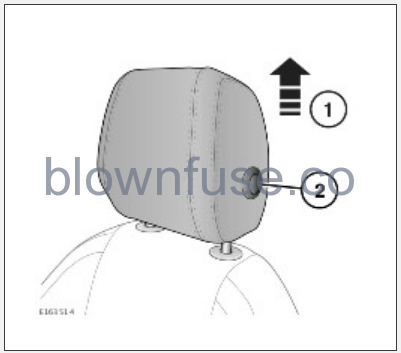
To raise or lower the head restraint:
- Pull upward to raise.
- Press the button located on the side of the head restraint and simultaneously push the head restraint downward to lower.
To remove a front head restraint:
Head restraints fitted with rear media screens must not be removed.
Two people are required for this operation.
- Raise the head restraint to its highest position.
- Press down on each of the head restraint stem collars using two hands. The stem collars engage hidden buttons inside the seat.
- While the collars are pressed down, a second person can lift the head restraint out of the seatback.
To refit the head restraint, press the button on the side of the head restraint. While holding the button, press the stems into the head restraint as far as possible. Insert the head restraint stems into the seatback sockets and push downward until at least the first click.
REAR HEAD RESTRAINTS
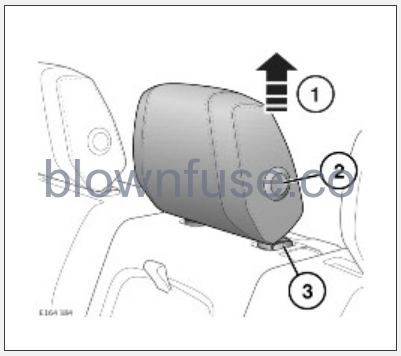
To raise or lower:
- Pull upward to raise.
- Press the button located on the stem collar and simultaneously push the head restraint downward to lower.
- To remove the rear head restraint, raise to the highest position. Press the button on the stem collar and lift the head restraint out of the seatback.
To refit the head restraint, make sure it is facing the correct direction. Insert the head restraint stems into the seatback sockets and push downward until at least the first click.
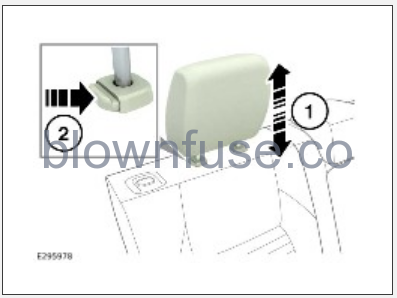
To raise or lower:
- Pull upward and raise to the highest position. The head restraint locks into position.
- Press the button located on the stem collar and simultaneously push the head restraint downward to lower.
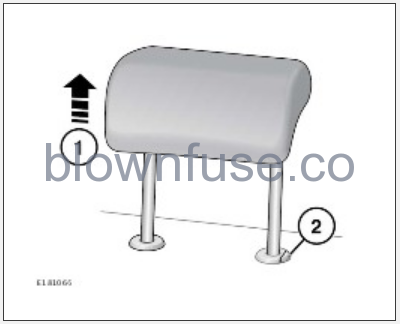
To raise or lower:
- Pull upward and raise to the highest position. The head restraint locks into position.
- Press the button located on the stem collar and simultaneously push the head restraint downward to lower.
REAR HEAD RESTRAINT REMOVAL
Make sure to read and fully understand the relevant warnings before using any of the features in this section. See HEAD RESTRAINTS SAFETY.
Do not drive or carry passengers with the head restraints removed from an occupied seat. The absence of a correctly adjusted head restraint increases the risk of neck injury in the event of a collision.
Always store a removed head restraint securely. In the event of an accident, an unsecured object could cause serious injury or death.
To remove a head restraint:
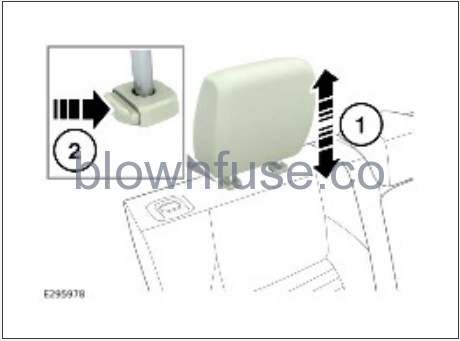
- Raise the head restraint to its uppermost position and press the button on the locking collar.
- Lift the restraint out of the seatback.
Make sure the head restraint is refitted before the seat is used by a passenger.
To refit a manual head restraint:
- Make sure the restraint is facing the correct direction.
- Insert the stems of the head restraint into the sockets on the seatback.
- Push the restraint downward until at least the first click.
